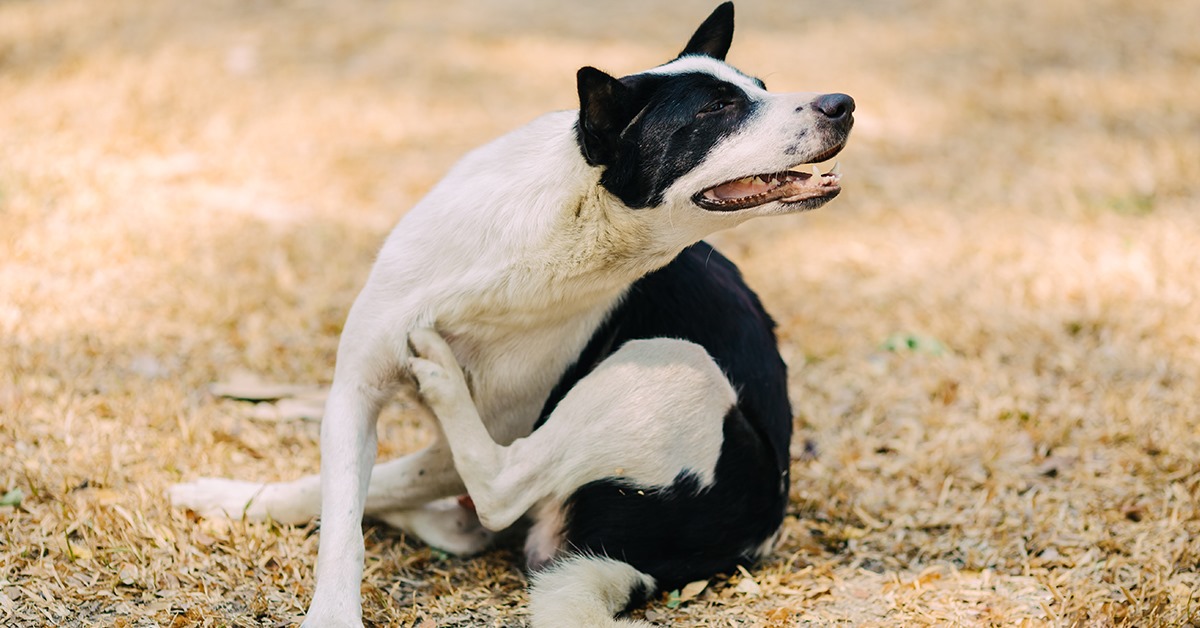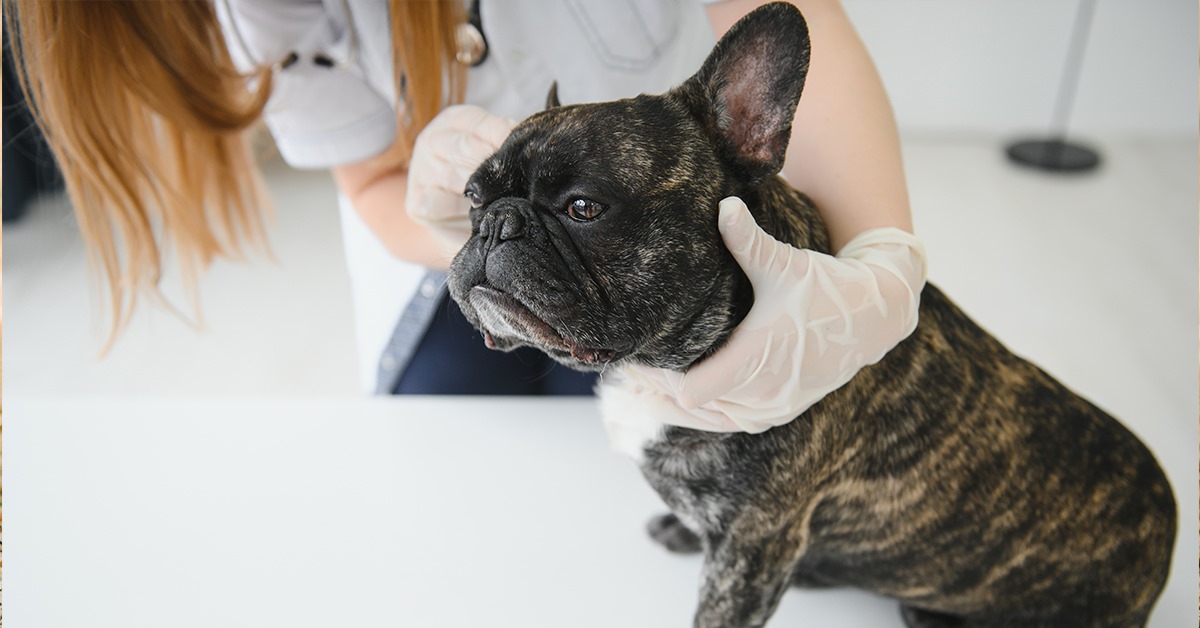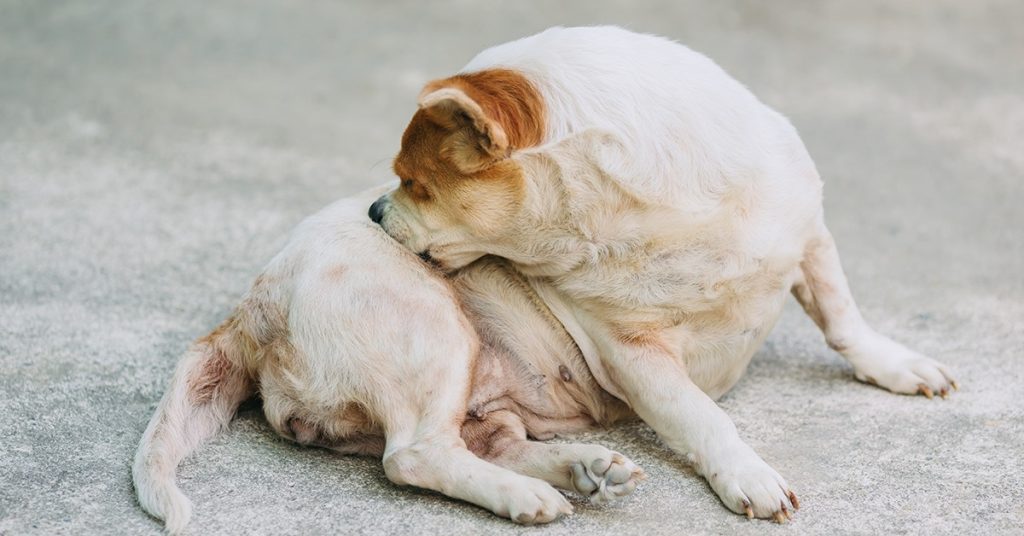Fleas are tiny, blood-sucking pests that cause dogs constant itching, discomfort, and relentless scratching. As pet owners, it’s essential to protect our dogs from these pesky parasites. This comprehensive guide will explore how to prevent fleas on dogs. Whether you are looking for preventive measures or natural remedies to protect your pets from fleas, we have you covered. Let’s dive in.
What are Fleas in Dogs
Every dog owner fears fleas, those tiny, wingless insects. These minuscule pests are members of the Siphonaptera order and are expert bloodsuckers. The flea measures only 1-2 millimeters in length, but its powerful hind legs allow it to leap remarkable distances.
Despite their small size, fleas can cause dogs a lot of discomfort and health issues. Their bites inject saliva containing anticoagulants, causing itching, irritation, and allergic reactions. Additionally, fleas transmit various diseases and parasites, so preventing and controlling them is extremely important for your dog.
Signs of Flea Infestation in Dogs

Detecting a flea infestation early is crucial for preventing discomfort and potential health issues for your dog. Here are some common signs to watch out for:
Excessive Scratching
If your dog constantly scratches, bites, or licks, especially near the tail base, abdomen, or groin, it might cause flea bites and irritation.
Visible Fleas or Flea Dirt
Make sure your dog’s fur is free of fleas, especially behind the ears and along the back. The fleas might be moving around, or you may see small, dark brown specks.
Redness and Irritation
Flea bites, especially in areas where they have repeatedly bitten, can cause redness, inflammation, and sores on your dog’s skin.
Hair Loss
Flea infestations can cause hair loss, especially when dogs are scratching excessively or biting their fur.
Restlessness and Discomfort
Dogs with fleas may show signs of restlessness, discomfort, or agitation due to itching and irritation.
If you see any of these signs, you should treat your dog immediately to get rid of the fleas. Now, let’s examine how to prevent fleas in dogs.
How to Prevent Fleas on Dogs

Regular grooming, flea control products, environmental management, and veterinary care are the best ways to prevent fleas on dogs. Here are some effective preventative measures:
1. Regular Grooming
Grooming your dog regularly is essential to keeping his coat healthy and flea-free. Use a flea comb to thoroughly brush your dog’s fur, focusing on areas where fleas may hide, such as behind the ears, along the back, and around the tail. Pay close attention to flea dirt (small black specks that resemble pepper) as you brush.
You can also kill existing fleas and prevent future infestations by bathing your dog with flea-repellent shampoo. Bathing too frequently can strip your dog’s skin of natural oils, causing dryness and irritation.
2. Flea Control Products
Flea control products include topical treatments, oral medications, and flea collars. The topical treatments treat fleas and ticks directly on your dog’s skin. Taking oral flea medication kills adult fleas when they bite your dog.
The active ingredients in flea collars repel and kill fleas for several months. Please consult your veterinarian to determine which flea control product is best for your dog based on its age, size, health status, and lifestyle. Follow instructions carefully to ensure flea control products are safe and effective.
3. Environmental Control
Fleas not only infest your dog but also lurk in your house and yard, waiting to reinfest it. To control fleas, you need to treat your dog’s environment, too. Vacuum your home often, especially carpets, rugs, and furniture where your dog spends time.
Immediately after vacuuming, empty the vacuum bag or canister to prevent fleas from escaping. Regularly wash your dog’s bedding and any other fabric items they come in contact with in hot water to kill fleas. Additionally, consider treating your yard and outdoor areas with flea control products or natural remedies to prevent re-infestations.
4. Regular Vet Check-ups
You should visit your veterinarian regularly to monitor your dog’s health and discuss flea prevention strategies. Your vet can recommend flea control products based on your dog’s age, size, health status, and lifestyle.
You can also get advice on how to implement preventive measures and ask any questions you have effectively. Follow your vet’s recommendations so your dog gets the best care and protection against fleas.
FAQs
What kills fleas on dogs instantly?
It’s hard to kill fleas instantly on dogs, but there are fast-acting flea control products that can get rid of them quickly. Typically, these products come as topical treatments or oral medications that kill adult fleas quickly upon contact or ingestion.
While some products start working right away, others take up to 24 hours to eradicate fleas fully. You should follow the manufacturer’s instructions and consult your veterinarian to determine the most effective flea control product. Furthermore, regular flea control treatments can prevent future infestations and keep your dog flea-free.
What naturally kills fleas on dogs?
Several natural ingredients and remedies can help repel or eliminate fleas in dogs, but their effectiveness may vary. Consider these natural options:
- Apple Cider Vinegar: Apply dilute apple cider vinegar to your dog’s coat to keep fleas away. Spray equal parts of apple cider vinegar and water on your dog’s fur, avoiding their eyes and ears.
- Essential Oils: Some essential oils, like lavender, peppermint, cedarwood, and lemongrass, repel fleas. Use essential oils diluted in water or carrier oil (like coconut oil) on your dog’s collar or bedding. Using essential oils directly on your dog’s skin without consulting your veterinarian is risky, as many oils can be toxic.
- Diatomaceous Earth (DE): It’s a natural powder made from fossilized algae that controls fleas. Apply DE to your dog’s bedding and carpets, focusing on areas where fleas hide.
- Rosemary Flea Dip: Infuse fresh rosemary with boiling water to create a strong herbal infusion. After it cools, strain out the rosemary and use it as a final rinse after bathing your dog. The natural flea-repellent properties of rosemary can help keep fleas away.
- Flea-Repellent Plants: Planting lavender, rosemary, mint, and chamomile in your yard or garden can help reduce flea populations. Nonetheless, these plants may only provide limited protection and are not a substitute for other flea control methods.
Read More: Why Does My Dog Stink
The Takeaway
Making sure your dog is flea-free isn’t just about comfort; it’s about his health. Ultimately, regular grooming, the use of flea control products, managing the environment, and using natural remedies are all critical in flea prevention. Consult your veterinarian for a flea prevention plan tailored to your dog.




